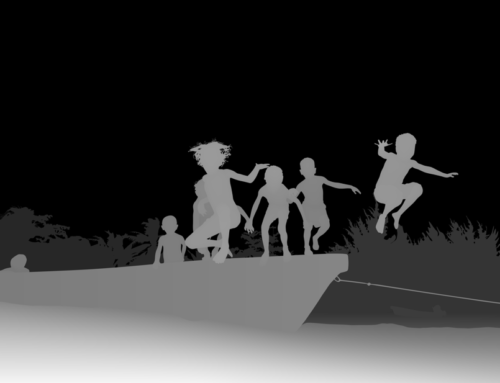Immersive Realism: The Flood FX Simulation Process in Maya
Introduction:
Flood FX Simulation: In the realm of visual effects (VFX), creating natural disasters like floods demands a delicate balance of technical prowess and artistic finesse. Maya, a leading software in 3D animation and VFX, offers a robust toolkit for simulating realistic flood effects. In this blog, we’ll delve into the intricate process of flood FX simulation in Maya, uncovering the steps and techniques that bring torrents of water to cinematic life.
Understanding the Brief of Flood Simulation:
Before diving into the technicalities, it’s crucial to grasp the creative vision behind the flood sequence. Whether it’s a catastrophic deluge or a subtle water flow, understanding the context and narrative purpose of the flood informs every subsequent decision in the simulation process.
Preparation and Research:
A solid foundation is key to any successful simulation. This involves gathering references of real-life floods, studying water behavior, and analyzing how different factors such as velocity, volume, and environment influence water dynamics. Armed with this knowledge, the simulation artist can begin crafting a believable flood scenario within Maya.
Building the Scene:
The next step involves setting up the scene within Maya’s interface. This includes creating the environment, defining the boundaries of the water simulation, and positioning any objects or obstacles that will interact with the flood. Attention to detail here is paramount, as even subtle nuances in the environment can greatly enhance the realism of the final simulation.
Fluid Simulation:
At the heart of the flood FX process lies fluid simulation. Maya offers powerful tools like Bifrost, which enable artists to generate dynamic, physically accurate simulations of water behavior. By tweaking parameters such as viscosity, surface tension, and turbulence, artists can achieve the desired look and movement for the flood. Iteration is key at this stage, as fine-tuning the simulation may require multiple passes to achieve the desired result.
Here are some ideas to enhance your flood simulation process in Maya:
- Dynamic Water Sources: Introduce dynamic sources of water such as bursting pipes, overflowing rivers, or heavy rainfall to add complexity and variability to the flood simulation.
- Variable Terrain: Experiment with different terrains and topographies to simulate floods in diverse environments, from urban streets to rural landscapes. Each terrain presents unique challenges and opportunities for realistic water behavior.
- Obstacle Interaction: Explore the interaction between the floodwaters and various obstacles such as buildings, vehicles, and natural features like trees and rocks. Simulating how water flows around, over, or through these obstacles adds depth and authenticity to the scene.
- Secondary Effects: Consider incorporating secondary effects such as debris, foam, and spray to simulate the chaotic aftermath of a flood. These elements not only enhance realism but also contribute to the overall atmosphere and storytelling of the scene.
Lighting in Simulation
- Dynamic Lighting: Experiment with dynamic lighting setups to capture the changing mood and intensity of the flood. Utilize techniques such as volumetric lighting and caustics to enhance the visual impact of the simulation.
- Particle Systems: Integrate particle systems to simulate raindrops, splashes, and mist, adding layers of detail and complexity to the flood sequence. By fine-tuning particle properties like size, density, and behavior, you can achieve a more immersive and convincing simulation.
- Underwater Effects: Explore underwater effects such as refraction, caustics, and light scattering to simulate the unique visual characteristics of submerged environments. These effects add depth and realism to scenes where water levels rise above ground level.
- Dynamic Camera Movements: Experiment with dynamic camera movements to capture the scale and drama of the flood from different perspectives. Utilize techniques such as tracking shots, crane movements, and aerial views to immerse viewers in the unfolding disaster.
- Interactive Elements: Incorporate interactive elements into the scene, allowing users to manipulate certain parameters of the simulation in real-time. This can provide valuable feedback during the creative process and enable experimentation with different scenarios and outcomes.
- Narrative Context: Infuse the flood simulation with narrative context and storytelling elements to engage viewers on an emotional level. Consider the broader implications of the flood, such as its impact on characters, communities, and the environment, and use visual cues to convey these themes effectively.
By incorporating these ideas into your flood simulation process in Maya, you can elevate the realism, complexity, and storytelling potential of your visual effects, creating truly immersive and unforgettable cinematic experiences.
Interaction and Dynamics:
To enhance realism, the flood simulation must interact convincingly with its surroundings. Maya’s dynamics engine allows for the creation of realistic collisions, splashes, and ripples as the water interacts with objects in the scene. By carefully choreographing these interactions, artists can elevate the immersion of the flood sequence, drawing viewers deeper into the action.
Rendering and Compositing:
Once the simulation is complete, it’s time to render the final sequence. Maya offers robust rendering options, including Arnold and V-Ray, which enable artists to achieve stunning visual fidelity. Lighting, shading, and atmospheric effects further enhance the realism of the flood, while compositing techniques integrate the simulation seamlessly into the final shot.
Conclusion:
Creating realistic flood effects in Maya is a challenging yet immensely rewarding process. By combining technical expertise with artistic vision, simulation artists can breathe life into scenes of devastation and wonder, captivating audiences with the power and beauty of nature’s fury. As technology advances and creative boundaries expand, the possibilities for flood FX simulation in Maya are truly limitless.



